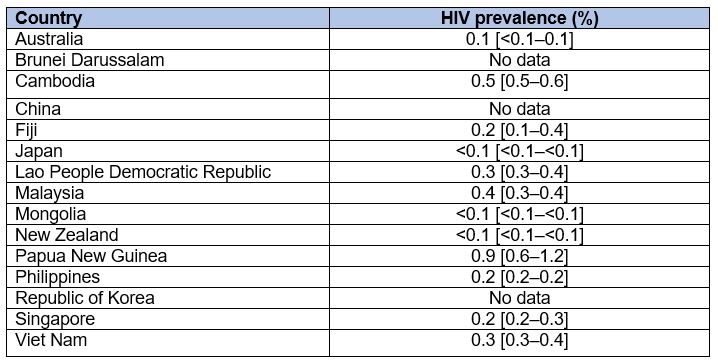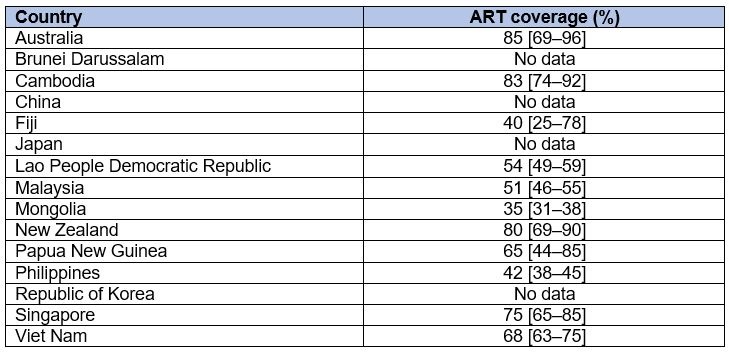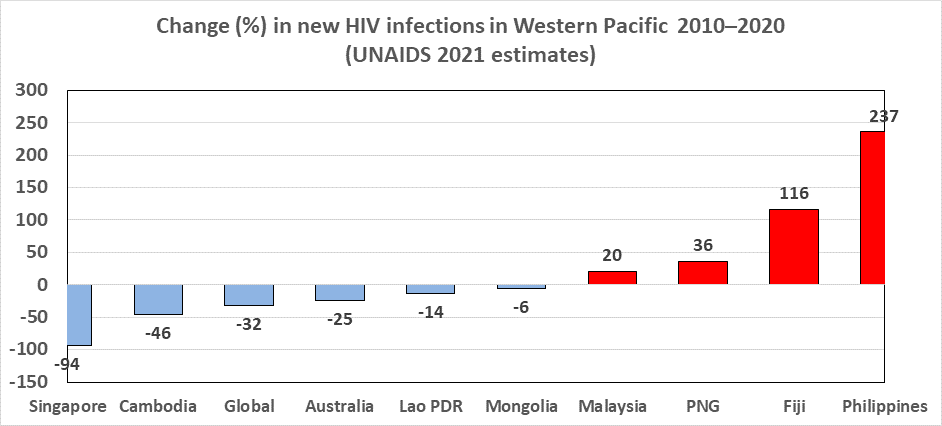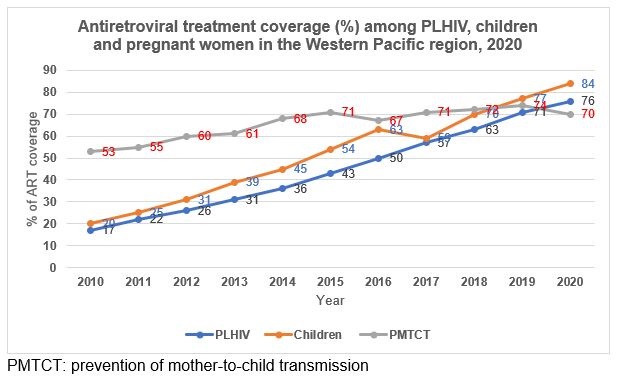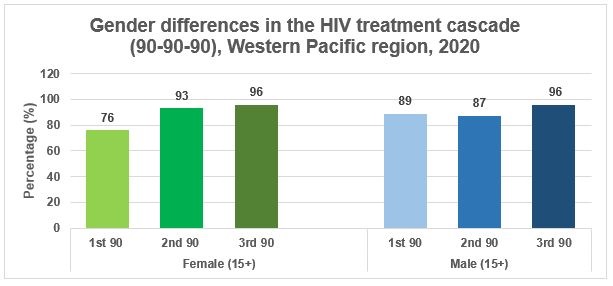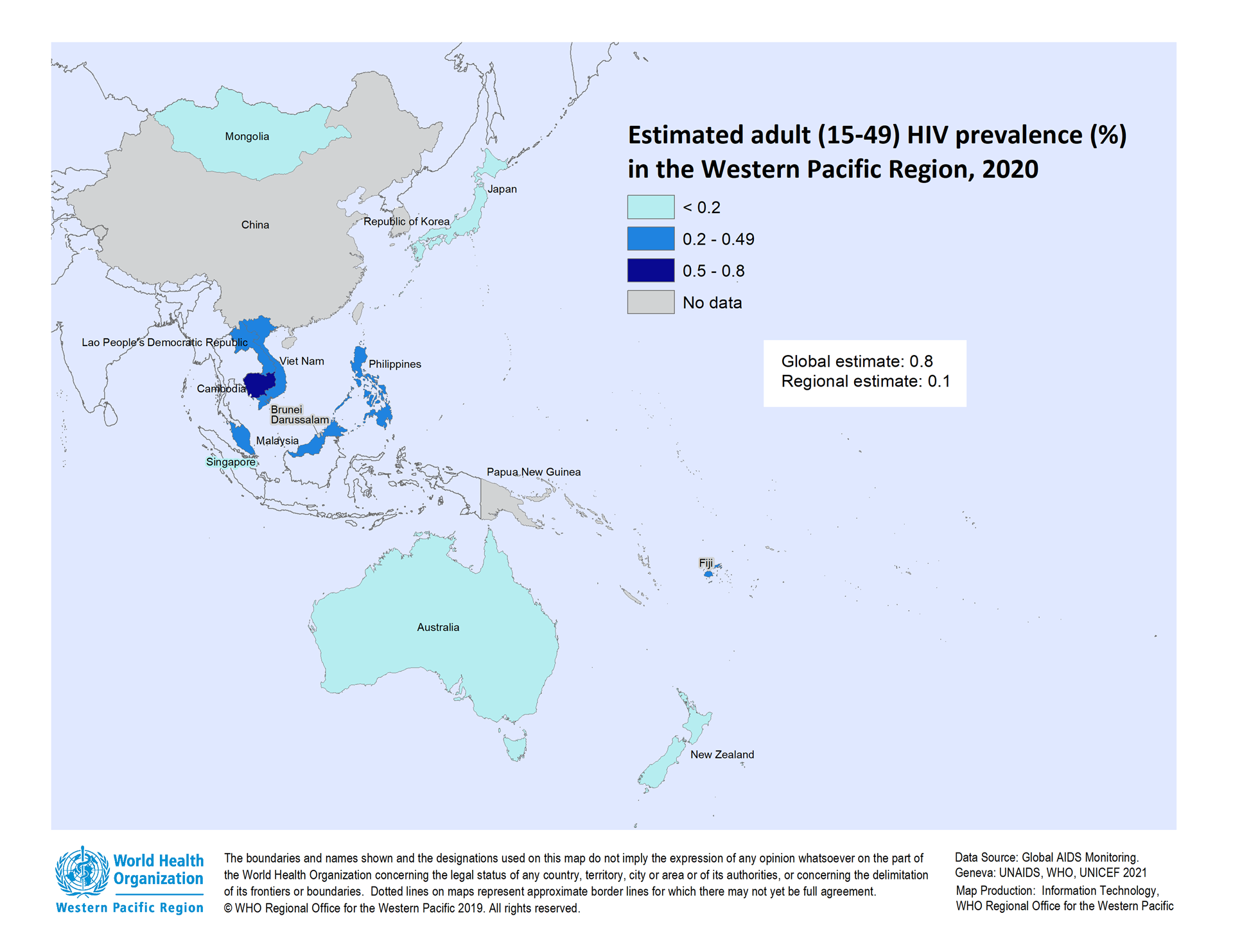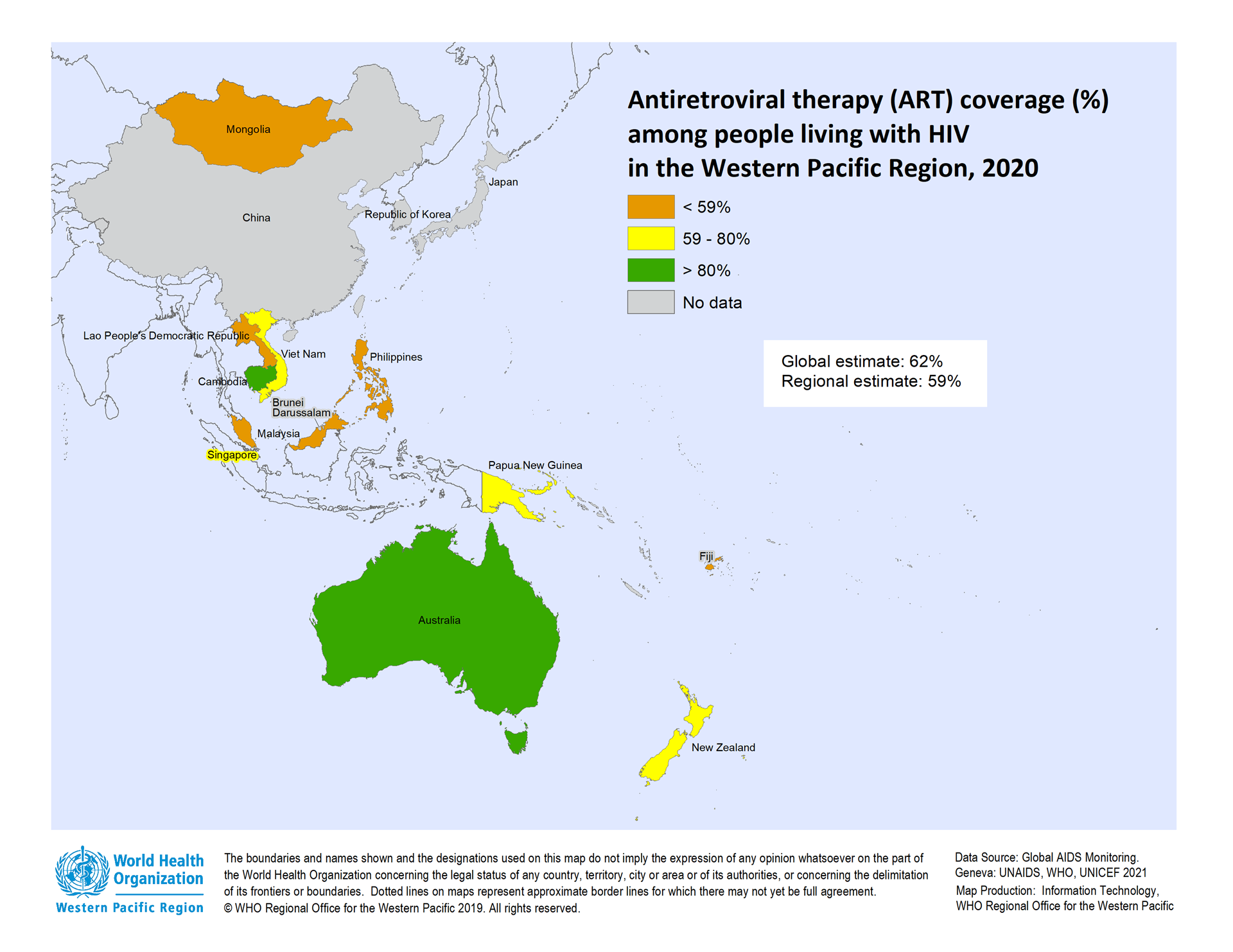HIV data and statistics in the Western Pacific
HIV in the Region
In the Western
Pacific, the estimated number of people living with HIV (PLHIV) reached 1.9
million in 2020, up from 1.4 million in 2010. While the Region is making
progress in treatment of HIV, challenges remain in relation to stigma and
discrimination and ensuring access to both prevention and treatment services,
especially for key populations at the heart of the epidemic.
Prevalence and rates of infection remain low
Over the past
two decades, HIV prevalence in the Western Pacific has remained low at 0.1%.
However, the low prevalence in the general population masks high levels of HIV
infection among key populations. There were an estimated 110 000 new
infections in the Region in 2020.
Key populations
continue to be most affected by HIV in the Region. Seven out of 10 PLHIV are
male. The predominance of male infections is largely attributed to continued
high-risk behaviours such as unprotected sex and sharing of injecting equipment
Prevention
efforts must be accelerated and focused more efficiently and effectively. There
have been efforts to increase the number of people living with HIV who know
their status by improving access to testing through community-based testing and
self-testing. Use of antiretroviral medicines for prevention through
pre-exposure prophylaxis (PrEP) for people at high risk of HIV infection is
expanding as countries begin to build on pilot projects.
Table 1: HIV
prevalence among adults (15-49), in the Western Pacific region, 2020.
Estimated global HIV prevalence was 0.7% [0.6–0.9] while regional prevalence in the Western Pacific was 0.1% [0.1–0.2].
Table 2: HIV incidence among adults (15-49), in the Western Pacific region, 2020.
Estimated new HIV infection per 1000 uninfected population was 0.19 [0.13–0.27] and in the Western Pacific region 0.06 [0.04–0.08].
Table 3: Antiretroviral
treatment coverage (%) among people living with HIV in Western Pacific region,
2020
The global
antiretroviral treatment coverage was 73% [56–88] in 2020. Regional coverage
was 76% [52–96].
Figure 1: Change (%) in new HIV infections in Western Pacific 2010-2020 (UNAIDS 2021 estimates)
Figure 2: Antiretroviral coverage (%) among people living with HIV, Western Pacific Region, 2010-2020.
Figure 3: Gender differences in the HIV treatment cascade (90-90-90), Western Pacific Region, 2020.
1st 90 - Among people living with HIV, % who know their status (age 15+)
2nd 90 - Among people who know their HIV status, % on ART (age 15+)
3rd 90 - Among people on ART, % with suppressed viral load (age 15+)
Figure 4: Estimated adult (15-19) HIV prevalence (%) in the Western Pacific Region, 2020.
Figure 5: Antiretroviral therapy (ART) coverage (%) among people living with HIV in the Western Pacific Region, 2020.






